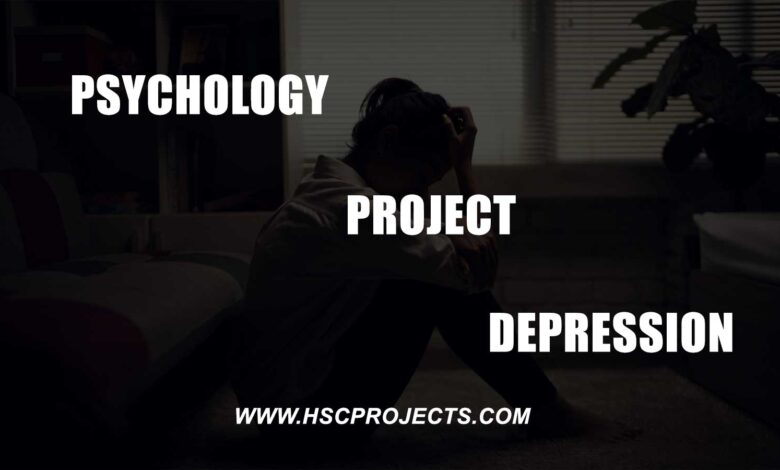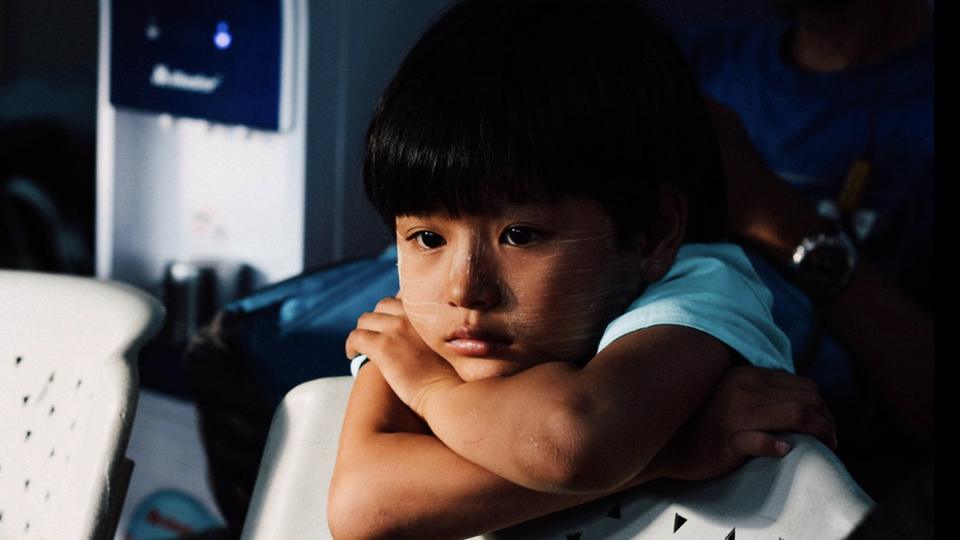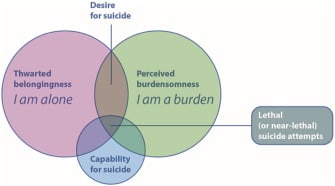
Psychology Project Class 12 CBSE – Depression
INTRODUCTION
In clinical practice, there is a frequently occurring problem namely, who has the competence to treat stuttering it is better to refer children who stutter to psychotherapy. Despite this psychologists regard stuttering as a speech problem and send back children who stutter to the speech therapist. As we know speech therapy can develop the frequency of speech communication ability, self-expression self-competence, and finally can reduce or estimate the symptoms of stuttering although children who suffer may have serious emotional problems and speech therapist.
CHILDHOOD DEPRESSION

Depression affects people of all ages, including children and young people. Depression among school-aged children is real and it is a serious problem that all too often goes unnoticed. The most common symptoms of depression are feeling worthless, anxious, empty, irritated, hopeless, loss of internet in activities inability to enjoy activities that used to be the sources of pleasure in daily activities change in appetite, persistent difficulty in falling speech or staying a step difficulty in concentrating or making decisions. Sigmund fraud suggests that depression also minutes guilt and self-criticism which can be related to loss during childhood. Anger or hostility may be directed at present if they do not give the child the love and warmth that is needed for healthy development. However these destructed feelings are turned inwards and the child blames himself for the loss, which leads to guilt and self-criticism. Rene spitz observed that infants separated from their caregivers for a long period exhibit developmental delays depression and withdrawal effects and unresponsiveness toward hospital caregivers. According to Jhon Bowlby, the human infant needed a secure relationship with adult caregivers, without which normal social and emotional development will not occur.

THE ROLE OF SEPARATION IN THE ETIOLOGY OF STUTTERING
Sara Klamiczay observed the mother’s report of children who stutter and found that among 80 children who stutter 39 were separated from their mother before the onset of stuttering. In a high percentage of cases, a lengthy separation from Luom’s mother proceeded to the development of the disorder. The child either has gone on holiday or into the hospital without his mother or mother having left home. In her view frustration with the child’s need to cling is fundamental to the formation of stuttering. Gertrude Watt says that speech development can be successful only if the relationship between mother and child is uninterrupted. The absence of such a relationship may produce a crisis of speech development. The kind of anxiety she observed in young stuttering children may best be described as fear of losing immediate access to and close contact with the mother or as an intensive longing to be closer to her. Peter Glauber wrote extensively about stuttering as a defensive reaction to the trauma of the child’s feelings of separation from their mother. In his experience, the predominant cause of stuttering is separation anxiety, especially in the context of the fantasy of the mother-child symbiosis.
CASE STUDY

A 13-year-old boy was referred to speech therapy because of his stuttering. He started to stutter when he was three years old and at that time he also had a bedwetting problem. In the early period of his diagnostic process, it turned out that he had serious emotional problems. He was often moody and sad without any reason. Sometimes he became irritable and withdraw from social situations. At that time he lost his interest in school and was thinking about committing suicide. I used different methods during his examination.
FIRST INTERVIEW

What we call if the first interview is when we first let the patient obtain the basic information about his problems. The grandparents called me before about their grandson’s stuttering. The mother and her son came to our first appointment. The boy is tall and thin. Moody is not happy. He seems older than his age. He speaks very low. The mother appeared to be about 30 years old. She was an average woman with long brown hair, big brown eyes, smiling face, she says that the teacher complaints about her son who has behavioral problems in school. He is not able to control his strong emotions. He is often angry because his classmates tease him. She adds that he is often sad and moody. She feels that he has an affinity for depression. She tells an incident when strange boys attacked her son while he was walking in the street on his way to the video shop. They teased him got around him and when he tried to run away they tripped him up he stumbled and hurt his knees. He did not know those guys in person just somebody by sight.
MOTHER REPORT
The next time I met the mother to obtain data about her child’s development. From the history the following details are important. The mother was comparatively young when she became pregnant, she was 21 years old, the pregnancy and birth were normal. Aaron was breastfed for 6 months was walking at 9 months and was toilet trained by 3 years. It was interesting, the mother did not remember his speech development. He did not fit in the nursery school but later he managed adopted to it. He was lonely in school and did not have any friends. He began to stutter at 3 years old and he had bedwetting problems when he was 4 years old. He has got 2 brothers Mike and Adam. Mike is 12 and Adam is 7 years old. When his brother was born he was only 1 year old and the birth of Mike was a shock for him when mike was born his mother went unexpectedly to a hospital. His father was very busy with his work and left the child in the care of grandparents in their house so the grandparents took care of him. Grandmother did not allow him to be taken to hospital as it would disturb him. He got very finally and rejected his mother. It was a Trauma experience for him.
DRAWINGS
DRAW THE PERSON-HOUSE-TREE TECHNIQUE
The house tree person (HTP) is a projective personality test, a type of exam in which the test taker responds to or provides ambiguous, abstract, or unstructured stimuli. In the HTTP, the test taker is asked a drawing house, trees, and persons, and these drawings provide a measure of self-perception and attitudes. As with other projective tests, it has flexible and subjective administration and interpretation.
Draw the person :
The figure is not too small and not too big according to the size of the paper. The lines are entangled. It is not looking for eye contact.
Draw the house :
The drawing of the house is schematic the lines are also entangled. The house is symmetrical.
Draw a tree :
The shape of the tree is also schematic the proportion of the branches and the truck is suitable, but the branches seem more dominant than the trunk. The roots which symbolize the past are not visible but this is customary in children because they are concerned about the present. The lines of the branches symbolize the relation to people.
Family drawings:
The drawing of the family always gives interesting information about the relationships in the family. They represent the unconscious desires and fantasies of the person who draws them. In the picture: mike his mother, Adam, his father, and him he draws himself in the picture at the last one but his shape is the largest one.
Fantasy family :
This is his “fantasy family “ drawing the task is to transform his family into anything he wishes. In his “ fantasy family,” his father is a house. The house is a home. The house symbolizes a feeling of safety. His mother has become a heart. The heart is the symbol of affection. Mike is a pinball machine because he is a winter. It symbolizes his feeling that his parents prefer mike over him.
Kinetic family :
I have found that asking children to draw their family drawing action is very informative. This type of family assuring manifests the togetherness of the family members acts together it can express their solidarity feelings for each other. In his “kinetic family, “ his mother washes up the dishes. Father digs a garden. His two brothers watch TV he separately watches TV in his room.
Mother-child :
The task is to draw a mother with her child. This drawing points out the characteristics of the relationship between a mother and her child. In the picture, they reach for each other but they are not attained each other.
RORSCHACH TEST

Next session we made the Rorschach test. The Rorschach test was developed by the swiss psychiatrist Hermann Research. The test consists of 10 cards, which are symmetrical inkblots. Some are black and white and some are colored. In theory, the respondent will project his motives into the descriptions he provides of the inkblot. The responses are recorded on the three major features :
- We call the first one: the location of the responses shows, how the individual can adapt to the would. For example, if the person refers to the whole stimulus it means, that person can look at the world from a perspective but keeps a distance from reality. If the person refers to the part of the inkblot it may mean that he is closer to real-life but gets lost in the details.
- The second one is determinants in these viewpoints we observe whether the subject responds to the space of the blot, its color, or differences in texture and shading. The determinants show the sociability and the anxiety of the person for example the introversive persons ascribe more moves to the inkblot than extrovert ones. The anxious person answers the shading of the blots is determinant not through their contour.
- The content of the response. From this viewpoint, we observe what the response represents. This is the symbolic meaning of the responses. Rorschach validated the method of diagnosing anxiety and hostility from the content of a subject’s responses to the inkblots. For example, hostility and anxiety are revealed by such responses as “green” and “blood” and other explicit expressions and cultural symbolisms of these emotions. The blots are differentiated from each other. Each blot can signal a specific meaning. For example, there are “mother” and “father” blots. We observe how the subject responses refer to the hidden meaning of the blot.
Aaron’s Rorschach test results from the various analyzing viewpoints :
- According to the location of his responses, he can adapt to the world and he is close to real life.
- The determinants show, that he is more introverted and he is full of fear and anxiety.
- Anxiety and hostility appeared in the content of his responses to the inkblots. Hostility is revealed by such responses as “dagger”. Anxiety is revealed by such responses as “blood”. In his responses to the “mother blot” appeared his ambivalent relationship with his mother according to my explanation he seems not to be able to separate from his mother and this is the reason for his anxiety, which he tries to eliminate with his aggression. In his responses to the 8th blot describes his problems to separate from their parents. He says: “two pumas, one on the right, one on the left side of the page compress the butterfly with their hind legs, prevented him go away”.
EXPLORATION OF SUICIDAL THOUGHT

I devoted one session to the exploitation of suicidal thoughts. I wanted to know how realistic his intention to commit suicide was.
- Since when have you had thoughts like this ? where would you commit suicide?
My suicidal thoughts started in the middle of January the first. It was because of my troubles in school.
I was serious about jumping out of the window in school because the others pestered me all the time. My suicidal thoughts started in the middle of January the first. It was because of my troubles in school.
I was serious about jumping out of the window in school because the others pestered me all the time.
- What would your classmates have believed if you had done it? They would have thought that I was stupid but they would have reflected on what had been done to me especially, Thomas and George. Supposedly the others didn’t notice what was done to me.
- What would your teacher have believed? she would have been very sad but she would not have been surprised, because she knew that I was sad and was teased by others.
- What was your mother have believed?
She would have thought that I had committed suicide because I was sad. She would act so like when grandma died. She went out into the garden. Sat down and cried.
- What would your grandparents have believed?
My older younger brother would not understand it, but later he would miss me increasingly. First, he would see the benefits, that he gets my room. Who would go to your funeral? dad would surely go to my funeral and I am not sure that my mom and my siblings would do so.
- Was there anybody who committed suicide in your family?
My great-grandfather died when he was young. He drank a lot. He went regularly to horse races. Maybe he had suicidal thoughts.
CONCLUSION OF THE PROCESS
Aaron was separated from his mother when his younger brother was born. The next separation from his mother was very difficult for him. He did not fit in the nursery school. He was 3 years old when he began to stutter and 4 when he had bedwetting problems. These symptoms are signals of his anxiety. I thought that his stuttering could be seen as a reaction to his early separation fitting in into the community always goes slowly for him. He also has integration difficulties in school. He was lonely and his classmates tease and exclude him, which makes him angry.
ACKNOWLEDGEMENT
I would like to express my special thanks of gratitude to my teacher as well as our principal of the school who gave me the golden opportunity to do this wonderful project on the topic of Psychology which also helped me in doing a lot of research and I came to know about so many new things, I am thankful to them. Secondly, I would also like to thank my parent and friends who helped me a lot In finalizing this project.
CERTIFICATE
This is to certify that of class, of Xll of school Tagore International, has completed the project under my supervision. He has taken proper care and shown almost sincerity in the completion of this project. I certify that this project is up to my expectations and as per the guidelines issued by CBSE.
Teacher’s Signature
Examiner’s Signature
DOWNLOAD PDF OF THE PROJECT

Password: hscprojects.com
In order to download the PDF, You must follow on Youtube. Once done, Click on Submit
Follow On YoutubeSubscribed? Click on Confirm
Download Psychology Project Class 12 CBSE – Depression PDF




Very nice project ✨💯